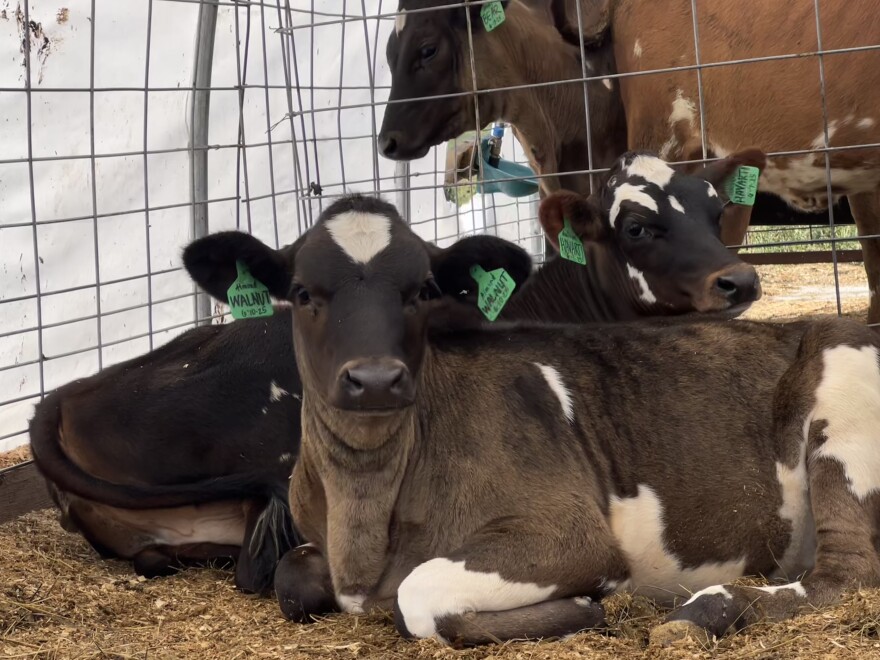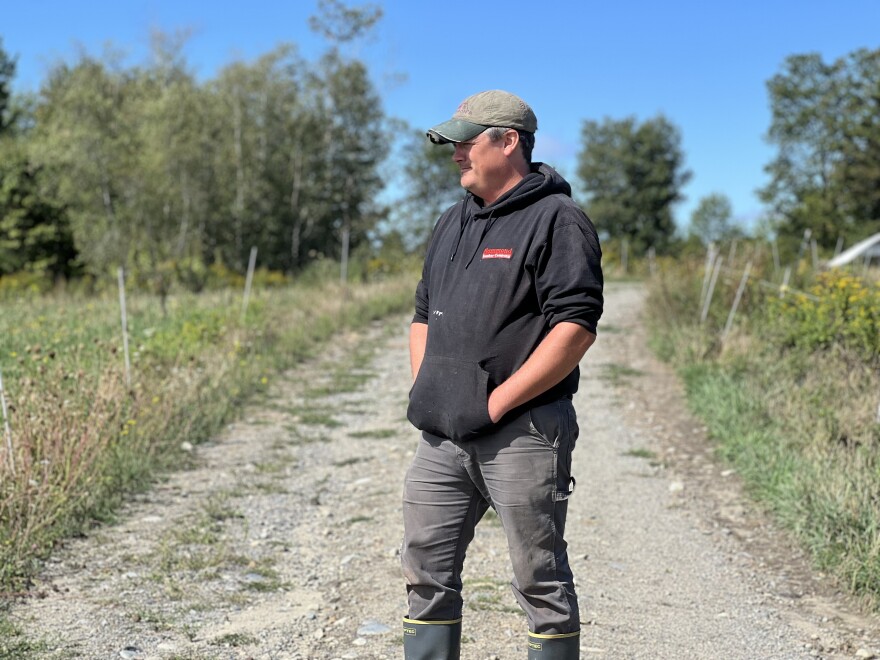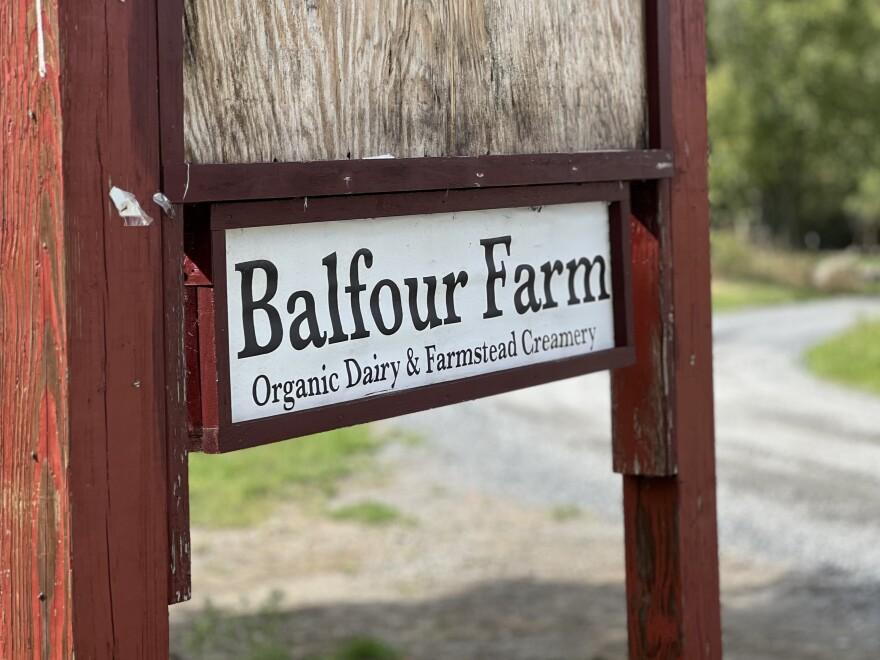As farmer Andy Smith walks past his youngest cows, they cry out hoping to get fed. He passes by and continues out to the pastures. Smith notes how short and sparse the grass is.
The wide-open fields are green but far from lush. That’s not normal for this time of year.
“To the untrained eye, [they'll say], ‘Oh, look, there's all kinds of stuff out there,’" he says. "But this really needs to grow for at least three or four weeks before we can graze or harvest it.”
Smith owns Milkhouse Farms in Monmouth, a 250-acre dairy farm with around 100 cattle — 40 of which are milking cows.
The cows need to graze in Smith’s fields to produce milk that he can then sell or turn into cheese, yogurt and other dairy products. But Smith said the grass hasn’t grown in weeks due to dry weather.
While some parts of Maine saw rain over the weekend, drought conditions are still in effect. They're affecting all types of crops — from apples to potatoes to wild blueberries.
But the biggest challenge may be for farmers who grow hay to feed their livestock.

In typical summer, inland Maine sees between 6 and 12 inches of rain. The coastal areas see about 6-10 inches. This year, all regions, with exception to some of Aroostook County, saw less than half of normal rainfall.
Average temperatures were about two degrees higher too, according to the U.S. Drought Monitor.
These combined factors put Maine in what experts call a flash drought.
Smith says he couldn’t have predicted how drastically the climate shifted from late spring to early summer.
“May and June were very wet, so all of our harvest and planting was very delayed, and then the rain just shut off. … We went from being too wet to just bone dry and literally dusty," he says.
In a typical year, Smith says the farm is completely self-sufficient for feeding the cows.
In a good year, he’ll even have extra hay to store for winter or sell to other farms.
But this year, he’s had to spend money on hay. He bought two tractor loads from New York for $15,000 last week. He says he might have to buy more before the season’s done — if he can find any.
“I've been talking to several other organic dairy producers, and we can't find, you know, large quantities of feed anywhere. It seems like every time someone gets mentioned somewhere that might have feed available, it just disappears immediately,” Smith says.

Experts say Maine farms aren’t equipped to handle droughts.
Tom Gordon is the Soil and Water Conservation Program Coordinator with the state agriculture department. He says while around 445,000 acres are dedicated to cropland in Maine, only about 10% are irrigated. The rest relies on regular rainfall.
“We have some concerns about where this is all going to go," Gordon says. "This water deficit causes a great deal of stress to the plants, and that can have ongoing impacts in terms of their ability to uptake nutrients as well as water.”
Gordon says irrigation systems are expensive and out of reach for most farmers. They often involve drilling wells or installing storage ponds and investing in large scale equipment to spray water over fields.
This year the state rolled out a $1.3 million "Farmers Drought Relief Fund" to help defray some of those costs. The state says it received 28 applications and awarded 24 grants. Gordon says he expects the program to grow next year.

At Balfour Farms in Pittsfield, farmer Doug Donahue's cows are chewing on just a couple inches of grass on their pasture.
Normally, Donahue would section off one-acre parcels for grazing. On this day, he’s opened all 12 acres. And he's spread piles of reserve hay he had stored for the winter — in case the fresh grass is all eaten up.
“In a normal year there would be knee-high grass right here at the moment and they’d be eating nothing but grass, but not this year," Donahue says.
Donahue considered irrigating his pastures before, but it never seemed cost effective. After this year's drought, he’s having second thoughts.
"You never know," he says. "There's a lot of things you can work around, whether it's financial or logistics of moving product or whatever the case may be, but there's not much you can do when it stops raining.”
Tom Gordon says there are no official data on crop losses from drought in any given year.
But he says Maine is working with the U.S. Department of Agriculture to possibly provide federal relief for farmers who have experienced losses. Those who participate in USDA programs would be recorded in the next "Census of Agriculture" which is released every five years.



